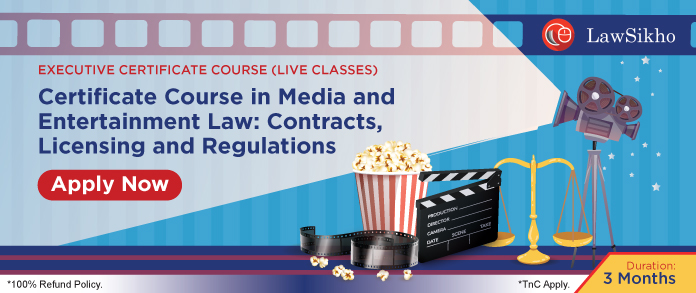This article is written by Kanya Saluja from Institute of Law, Nirma University. The article talks about what is blockchain and how it works as well as its impacts on HR.
Table of Contents
Introduction
Is Blockchain the present irritating popular expression or an innovation that is going to significantly alter how we live, work, and work together? While we’re unquestionably not “there” yet, my vote is on the last mentioned. So, what is blockchain? It’s a carefully scrambled record that stores data freely in bunches called “blocks.” It’s decentralized database just offers access to individuals from a “chain,” so they can see and check the data inside that particular “chain” or system. The center rule of blockchain innovation is trust, evacuating mediators, and the requirement for outsider approval. Before we talk about blockchain’s effect on HR and the eventual fate of work, and the job it will play in ability enrollment, ability of executives and HR activities all in all, we should plunge somewhat more profound into blockchain in general.
While the monetary administration industry will, in general, be head of the brain when discussing blockchain and its latent capacity, it’s imperative to comprehend that blockchain isn’t just about cash—it’s about transactions, and those transactions don’t need to include cash by any means. Those transactions could be activities like votes, getting to archives, credentialing, the usefulness of items in the graceful chain, thus considerably more.
Blockchain innovation is being embraced by numerous associations consistently. With innovations like Artificial Intelligence (AI), Big Data Analytics, IoT, and distributed computing, we are set out toward a mechanical upset. In the midst of everything being equal, blockchain will probably progress ahead. Blockchain is the foundation of cryptographic forms of money and can secure information, in contrast to internet-based life sites. Blockchain doesn’t simply permit information proprietorship yet additionally gives you a protected passage through which data can be traded. In the expressions of Tyler Winklevoss, Co-maker of Facebook, “We have chosen to put our money and confidence in a mathematical structure that is liberated from governmental issues and human blunder.”
What is Blockchain?
Blockchain is truly only a chain of blocks, however not in the conventional feeling of those words. At the point when we state the words “block” and “chain” in this unique circumstance, we are discussing advanced data (the “block”) stored in an open database (the “chain”).
“Blocks” on the blockchain consist of advanced snippets of data. In particular, they have three sections:
- Blocks store data about transactions like the date, time, and dollar measure of your latest buy from Amazon.
- Blocks store data about who is taking part in transactions. A block for your lavish expenditure buys from Amazon would record your name alongside Amazon.com, Inc. (AMZN). Rather than utilizing your genuine name, your buy is recorded with no distinguishing data utilizing a one of a kind “computerized signature,” similar to a username.
- Blocks store data that recognizes them from different blocks. Much like you and I have names to recognize us from each other, each block stores an exceptional code called a “hash” that permits us to disclose it separated from each other block. Hashes are cryptographic codes made by unique calculations.
How Blockchain Works?
At the point when a block stores new information it is added to the blockchain. Blockchain, as its name recommends, consists of various blocks hung together. All together for a block to be added to the blockchain, be that as it may, four things must occur:
A transaction must happen. We should proceed with the case of your incautious Amazon buy. After hurriedly navigating different checkout briefs, your conflict with your better judgment and make a buy. As we talked about above, by and large, a block will amass conceivably a huge number of transactions, so your Amazon buy will be bundled in the block alongside other clients’ transaction data also.
That transaction must be confirmed. After making that buy, your transaction must be checked. With other open records of data, similar to the Securities Exchange Commission, Wikipedia, or your nearby library, there’s somebody responsible for screening new information sections. With blockchain, in any case, that activity is surrendered over to a system of PCs. At the point when you make your buy from Amazon, that system of PCs hurries to watch that your transaction occurred in the manner you said it did. That is, they affirm the subtleties of the buy, including the transaction’s time, dollar sum, and members. (More on how this occurs in a second.)
That transaction must be stored in a block. After your transaction has been confirmed as exact, it gets the green light. The transaction’s dollar sum, your computerized mark, and Amazon’s advanced mark are stored in a block. There, the transaction will probably join hundreds, or thousands, of others like it. That block must be given a hash. Much the same as a holy messenger acquiring its wings, when the entirety of a block’s transactions has been checked, it must be given a one of a kind, recognizing code called a hash. The block is likewise given the hash of the latest block added to the blockchain. Once hashed, the block can be added to the blockchain.
At the point when that new block is added to the blockchain, it turns out to be openly accessible for anybody to see—even you. On the off chance that you investigate Bitcoin’s blockchain, you will see that you approach transaction information, alongside data about when (“Time”), where (“Height”), and by who (“Relayed By”) the block was added to the blockchain.
Blockchain Impact on HR
Blockchain in Recruitment – Even though the HR landscape has experienced gigantic changes over the most recent two decades, the appropriation of blockchain has been moderate. We have seen the procedure of confirmation, continue screening, interviews, and onboarding developing monstrously. The customary method of selecting was experiencing an office, which has changed with the presentation of blockchain. It has empowered direct cooperation between the candidate and the selection representative. The end of the agent has smoothed out the progression of information just as the cost in question. In an examination, it states blockchain technology is fit for improving the way toward recognizing possible candidates by furnishing a database of individuals with experience and abilities after approving them precisely.
Blockchain has most likely affected the HR space, however, the key regions where it tends to be coordinated are:
Foundation Verification
The monotonous procedure candidates experience for the check procedure for an association is burdening. Incorporating blockchain in the process will help secure data like business history, capabilities, character proofs, pay data, and so on. When the information is confirmed and added to the record, it can’t be modified; notwithstanding, one can include more records. The data is secure and positive and can’t be controlled. Candidates can make their profile and offer their preferred applicable data with the business without including an outsider.
Simple Onboarding:
After checking the candidate data utilizing blockchain techs like location verification, past business records, and different qualifications, the selection representative can analyze the candidate without the tedious documentation process, which makes the procedure on recruiting customers simpler.
Payroll
The payroll procedure for worldwide workers turns out to be progressively alright with blockchain. The cash moving procedure to another nation can be a requesting procedure, and most associations include a go-between for the equivalent. Blockchain cuts the go-between and makes the procedure simpler. For instance, an organization called Bitwage utilizes bitcoins for cash moving purposes. The representative gets paid in nearby cash with no other gathering included. This should be possible utilizing blockchain tech. The association sets aside cash in the process too by chopping down the installment of the outsider.
Corporate Global Mobility Operations
We examined with a customer a couple of months back on corporate portability and how versatility contributions are a piece of both ability securing and ability maintenance system. The present age of laborers needs chances to learn, develop, and to investigate the world and experience life in different nations. The mix of blockchain technology into HR and corporate portability activities can be incredibly helpful to migrating representatives and the organizations for whom they work. This may be giving the necessary data to guarantee worldwide workers hold fast to nearby assessment purviews. It may deal with the redesigning of cross-fringe cost systems, including the capacity to code rules and constraints into the blockchain, which could then wipe out the requirement for a mark or approval process.
New Pattern of Working and Learning: PwC, in their examination Millennials at work, speaks seriously about the new age work culture. In this advanced age, individuals will, in general, enjoy a reprieve from work, seek after various vocation choices, and take occupations that are bolstered by technology. The investigation says 71% of twenty to thirty-year-olds are energetic about working abroad and need such assignments.
Paying these representatives abroad turns into a hustle for the association as referenced previously. The blockchain assists with cutting the broker and henceforth becomes cost-effective. Blockchain technology permits the association to pay in bitcoins. The representative working abroad gets compensation in the global money and the association diminishes the cost they pay another foundation for the smooth transaction.
We know about how significant consistent learning is for workers of any association. Individuals settle on casual approaches to keep themselves refreshed, as an online affirmation, computerized qualifications, identifications, and so forth. These can be followed and refreshed in representatives to continue with blockchain.
Smart contracts
Blockchain can cause shrewd agreements between the worker and boss to occur without the association of outsiders. With a keen agreement, the codes decide the conveyance of cash. Which brings about no postponements or extortion. A few legal counsellors are attempting to make brilliant agreements to computerize the appropriation of the capital procedure. If the idea turns into a standard while recruiting, it will change the whole finance scene.
A few firms far and wide are considering embracing the idea and blockchain technology. For instance, Walmart utilizes the blockchain tech to follow domesticated animals that travel through the graceful chain from China.
Blockchain can get another point of view for the HR area. An association can remain refreshed by building up an essential comprehension of the tech. Understanding the issues in the association, they can search for a seller who spends significant time in HR issues and the HR blockchain advert. In a study led by 600 officials, 84% of individuals detailed that their association rehearsed some blockchain technology. Associations have received blockchain technology to increase an upper hand over a different association.
As one would have assembled, a very much planned blockchain removes the delegates, chops down the expenses, and enables the association to be quicker with better reach. Also, in business forms, this technology offers detectability and straightforwardness, since it allows us to see the property and transactions of every open location which enables the business to develop. It is normal that constantly 2030, a specific level of the worldwide monetary framework would be running with frameworks that help blockchain technology
Blockchain’s Impact on HR Talent Acquisition and Management
As any HR master knows, there’s a great deal of work that goes into the talent acquisition process. Checking data and certifications put together by work candidates is no little piece of that procedure. Figure this is not a serious deal? Reconsider. On the off chance that individuals can exaggerate, on numerous occasions, they will. Truth be told, a CareerBuilder study found that somewhere in the range of 58 percent of bosses have distinguished a lie on a resume, and another investigation did a couple of years prior by HireRight, a business confirmation administration likewise giving individual verifications found that screening brought about creations or distortions on an astounding 86 percent of resumes. That is likely additionally an attempt to close the deal for their administrations, yet it’s most likely safe to state that in around 50 percent of circumstances, people fudge on their resumes. Utilization of blockchain in the credentialing procedure can give respectively confirmed records of instruction, abilities, workplace execution, preparing, confirmations—an advantage for work searchers and managers the same.
Concerning the matter of talent management, blockchain can likewise be utilized to follow accreditations, proceeding with instruction, preparing, and the like for existing representatives. The magnificence of coordinating blockchain into the HR records management process is that these stored documents can never be erased or overwritten—a chain can just have a block added to it, and just if everyone inside that chain concurs that the data in the block is valid. As should be obvious, blockchain will assume an essential job in solidifying trust.
Blockchain in HR Process Management
The management of transactional information involves a colossal job in the HR tasks of an organization, and blockchain can help make those transactions snappier, increasingly proficient, and progressively secure. Regardless of whether it’s representative finance, charge data, timesheets, clinical data, 401K decisions, excursion, and wiped out time following—practically all procedures can be made progressively smoothed out and increasingly secure with blockchain as a component of the condition.
Cyber Security and Fraud Prevention
The issue with conventional HR software and frameworks is that they can be straightforward and helpless when information penetrates. Actually, in the current week’s news features, we have the U.S. State Department detailing information to penetrate that included representative information (and that is not the first run through the central government and its workers have been the survivors of a break).
At the point when HR geniuses and their IT groups are accused of ensuring individual worker data as well as with securing huge volumes of money-related transactions, the obligation is huge. That is the place blockchain technology bests over conventional software/frameworks. All blockchains of data, contracts, or transactional information must be modified if the remainder of the chain gives its agreement. The appropriation of blockchain, from an HR standpoint, can assume a major job in cybersecurity and information insurance, and that by itself makes it a significant piece of a future of work discussion.
Conclusion
As should be obvious, blockchain’s effect on HR and the future of work can almost certainly be huge. It may be something you’re not yet hearing a ton about, however, there are organizations effectively well down this way, and likely more to follow. The test here is that blockchain all by itself isn’t there yet. Blockchain has limits, and as long as there are people associated with the procedure, there is the potential for mistakes. Thus, it is important to understand the Blockchain’s Limits.
References
LawSikho has created a telegram group for exchanging legal knowledge, referrals and various opportunities. You can click on this link and join:
 Serato DJ Crack 2025Serato DJ PRO Crack
Serato DJ Crack 2025Serato DJ PRO Crack











 Allow notifications
Allow notifications



